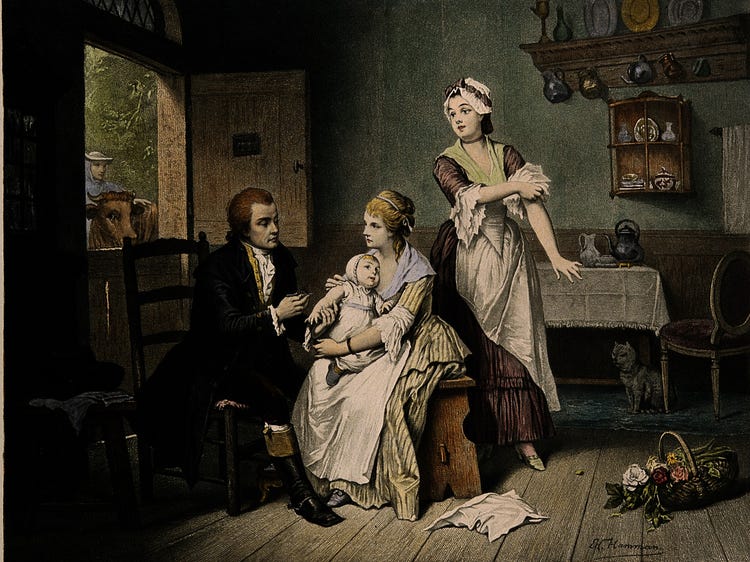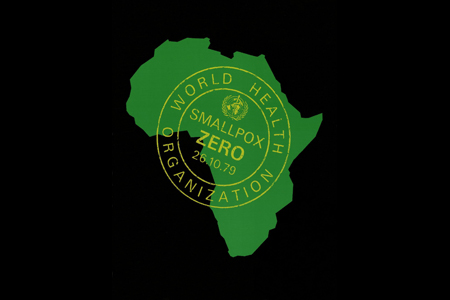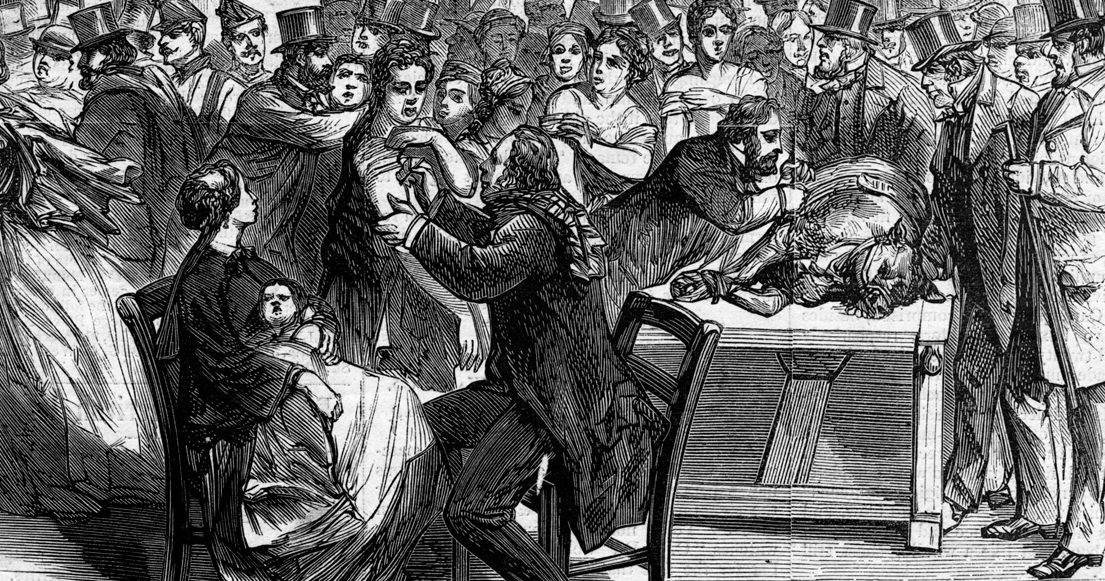In almost every science textbook, the origin of the term “vaccine” and its development is paired with the disease smallpox. The two are very closely linked with each other, and surely the disease is one of the primary reasons we have the miraculous medical phenomenon of vaccine, which saves uncountable lives every year. The story of how it all came to be is an interesting one and can be of hope in the dire times as now when we need not just one but several rays of hope to fight and get out of the crazy situation caused by the coronavirus.
So, let’s dive into the history of this disease and how keen observation by one talented physician lead to one of humankind’s greatest achievements.
Vile Beginnings
The exact origin of how smallpox came to be is not known, but it dates to thousands of years ago. Excavated Egyptian mummies that belonged to almost 3rd century BCE were found to have rashes that were similar to the patients who had the disease. Some descriptions have also been found over the course of history in India and China. Ten thousand years ago, this deadly disease, caused by one of two virus variants, Variola major and Variola minor, also created havoc in Africa. In 1350 B.C., the epidemic of smallpox hit the Egypt-Hittite war. It spread from prisoners to the people around and even killed the Hittite King. It continued to wreck other civilizations, aided by the extended trade routes and increased exploration during that time.

The virus causes lesions across the skin and body, rashes, and scars. According to the records, almost 30% percent of the patients passed away, and many recovered. Some even had to go through the danger of losing eyesight. The incubation period of the virus usually lasts a week to a fortnight, and no apparent symptoms appear on the patient. Initially, diseased individuals developed fever and body ache, which later transitioned into rashes, which were contagious. Lesions and scar may also have fluid in the middle causing extreme discomfort to the patient. Those who successfully fought it off, had scabs that fall off, leaving low to zero chances of contagion.
Start of descent
Even though smallpox was quite a nasty disease, it did help a lot in the development of what we in the modern-day call “vaccine.” But, mind you, the process of its eradication didn’t start with vaccination. In 1022 A.D., a book called ‘The Correct Treatment of Smallpox’ mentioned using smallpox scabs taken from a recovered patient and grinding it up to give to healthy individuals. This method was proposed by a Buddhist nun who developed it after noticing that the individuals who recovered from this disease never acquired it again. This method was called “variolation” and was later used for many years after physicians would make slight changes and hone it. It didn’t really make everyone immune to the virus, but the disease development ratio decreased quite significantly.
The real success, however, is attributed to the work done by Edward Jenner. When he was 13 years old, Jenner worked as an assistant to a country surgeon in Sodbury and once heard a milkmaid claim that she will never have smallpox as she has already had cowpox and will never go through the phase of having a face marked with lesions. This was an intriguing statement for the young boy.

Cowpox is another type of skin infection that infects cows. The cowpox virus belongs to the same family of viruses as smallpox, called Orthopoxvirus. Cowpox itself is very similar to smallpox but is a much less severe and contagious form. Jenner later analyzed the statement of the milkmaid when he became a physician himself and noted that what she said was right. When the cowpox virus infects a host different than the original one, in this case, humans, it was less virulent and not as deadly. He then decided to test if it could be used in the treatment of smallpox. So, on the historic day of May 14, 1796, he tested the fluid taken from cowpox blister of a milkmaid, Sarah Nelmes, on the skin of a young boy of eight named James Phipps. The latter developed a fever for a few days but recovered fairly soon.
Some months later, Jenner injected in the boy matter from a smallpox scar, but remarkably the boy did not develop the disease. It meant that he was now safe from it and will never possibly acquire smallpox ever again. This successful method was used for further experimentation, and the physician summarized his work in his treatise “On the Origin of Vaccine Inoculation,” hoping that it will overthrow the deadly sickness. After long discussions and reviews by the health establishment, vaccinations were finally approved. In the following centuries, the procedure was further improved, and scientists started to create new vaccines to fight other diseases such as tetanus, measles, polio, and many more.
Global efforts
Extensive vaccination programs, that we commonly hear of today, were also initiated around the world to combat health scares. Various programs such as those under the belt of the World Health Organization and regional and local governments were launched to take control over such threats and ultimately perish them with combined efforts.

World Health Organization designed and introduced a campaign in 1959 to remove the virus, but the plan received several setbacks. Over the next few years, outbreaks were still occurring, and many people were getting infected with the virus. A more organized program was initiated almost eight years later, and the labs in endemic countries were tasked to produce higher quality vaccines that they successfully delivered. Along with that widespread campaigns, improved surveillance systems and medical equipment also helped to alleviate the problem. Soon, countries across the regions of North America and Europe started to report good progress, and finally, by 1977, smallpox was annihilated.
On May 8, 1980, the world was officially declared free of this ailment by WHO and was indeed one of the biggest conquest health-wise. But the stocks of the virus are still contained in some laboratories that claim to require them for research purposes. International consensus led to reduce and limit the number of stocks and only store them in centers with tight regulations and security so as to avoid any potential use in bioterrorism. The two locations that have the official WHO licenses to handle and store it are the Centers for Disease Control and Prevention in Atlanta, Georgia, and the State Research Center of Virology and Biotechnology (VECTOR Institute) in Koltsovo, Russia.
Lessons learned
The impact of vaccination on controlling diseases is indeed very large and can’t be explained in a few words. Diseases like malaria, polio, and measles, etc. that once threatened the lives of millions and took away many precious souls are now within our control, although some underdeveloped regions are still struggling, but the cause is more social and regional than medical. We are in a new wave with mind-blowing technologies and advancement in fields that have elevated the level of services provided and improved the overall quality of life.
With the looming threat of coronavirus, it is in our nature to be scared and intimidated, but we should not forget the achievements this same nature unlocked in previous ages and brought us to the most advanced period in history. If we work together, observe keenly, and put in our best efforts, without a doubt, we can bring this coronavirus down to its knees just like smallpox and every other epidemic in history. It is the matter of will to face it and the courage that should be kept ignited to show that WE CAN, and WE WILL crush it!
Also Read: Viruses = Villains? Not Always!

Maham Maqsood is a science communicator and co-founder at Scientia Pakistan. She is currently doing Masters in Biochemistry at the Middle East Technical University, Turkey. She has over five years of experience in science communication and outreach, collaborating with researchers, educators, and communicators to develop effective strategies and content for various platforms and events.

